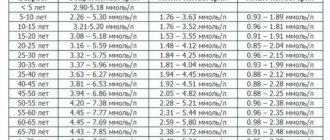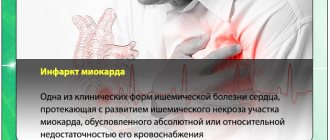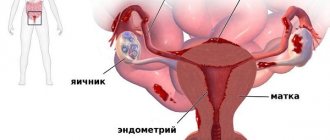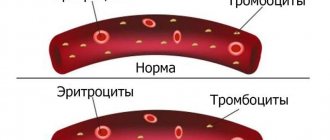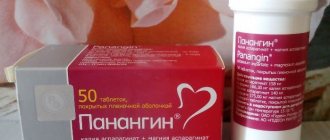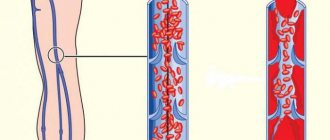Anemia during pregnancy serves as a clear confirmation of the increased consumption by the female body of its own red blood cells and iron reserves for the development and respiration of the fetus. Anemia is popularly called “anaemia”.
During pregnancy, anemia is an expected complication of the second and third trimester. It is easily diagnosed by a general blood test and classic symptoms. Quantitatively determined by hemoglobin level.
If future parents are interested in the question of what anemia in pregnant women is and how dangerous it is, obstetricians-gynecologists can be confident in fulfilling all the conditions for prevention. Such mom and dad worry about the heir in advance.
Iron deficiency anemia (IDA) during pregnancy. What is it, reasons, how does it manifest itself?
The most common form of anemia during pregnancy is iron deficiency anemia (IDA). It is believed that this disease develops as a result of increased use of iron by the fetus and insufficient compensation of the deficiency that occurs in the pregnant woman’s body due to her diet.
Anemia during pregnancy can also develop due to a poor menu, lack of vitamins and protein in the diet of the expectant mother. The presence of iron in the blood is responsible for the delivery of oxygen to the fetus. In women in an interesting position, the volume of circulating blood increases, this happens in order to ensure normal breathing of the baby in the mother's womb.
The body forms a new placental blood circulation, ensuring the supply of nutrients to the embryo. Red blood cells cannot keep up with the increasing volume, and this affects the hemoglobin level. The increase in volume is also caused by the fact that the body has “its own reserve” in case of large blood loss during childbirth.
The iron supply and the pregnant woman's own red blood cells are generously spent to meet the respiratory needs of the fetus. The chemical element iron plays a major role in the synthesis of hemoglobin: it binds oxygen and transports it to all tissues and organs.
Anemia can be diagnosed at the beginning of pregnancy by external manifestations: pale skin. In 40% of women, iron deficiency anemia is diagnosed only in the second trimester. At this time, oxygen consumption for the life support of the fetus increases, so obvious signs of anemia appear in pregnant women.
Clinical symptoms that occur in the second trimester are characterized by:
- general pain, frequent fatigue, drowsiness;
- mood swings;
- cracks, snags in the corners of the lips, dryness and flaking of the skin of the feet and palms;
- brittle hair and nails.
In the most severe stages of the disease, the following clinical signs accompany:
- an increase in the number of heart contractions, sometimes accompanied by chest discomfort;
- nausea, vomiting, loss of appetite;
- dizziness, fainting;
- decreased concentration, distracted attention;
- feeling of numbness in the limbs.
Causes
The causes of anemia in pregnant women are associated with an increasing load on the mother's body, hormonal changes and a significant decrease in immunity. The low level of iron intake before pregnancy and the absence of a compensatory increase come to the fore.
Contributing factors are:
- insufficient nutrition, passion for fashionable starvation diets, vitamin deficiency;
- hormonal imbalances, use of hormone-based contraceptives;
- chronic diseases of internal organs, uterus, appendages (especially liver, intestines);
- frequent nosebleeds, heavy menstruation;
- adolescence of the expectant mother or pregnancy after 30 years;
- passion for alcohol, smoking;
- polyhydramnios and multiple births;
- the onset of a second pregnancy earlier than four years after birth.
It has been established that during the period of gestation and feeding, the mother loses up to 900 mg of iron. It will take time to restore it. Therefore, anemia during pregnancy necessarily occurs with frequent childbirth.
How does anemia affect pregnancy? What is dangerous about low hemoglobin in early and late stages?
Anemia negatively affects both the health of the pregnant woman and the health of the fetus at any stage of pregnancy. Reduced hemoglobin leads to general weakness and fatigue. Lack of oxygen in a pregnant woman’s body also leads to rapid heartbeat and shortness of breath during physical exertion.
, frequent dizziness and headaches may occur Fainting is certainly dangerous during pregnancy. A short-term loss of consciousness can happen at any time; a sudden fall is fraught with various injuries.
With severe anemia, placental circulation begins to be disrupted, because of this, the unborn child feels a lack of oxygen and nutrients . In the third trimester, anemia can cause late toxicosis, which often leads to premature birth.
Degrees of anemia during pregnancy: symptoms, how it manifests itself, how dangerous it is
There are three stages of the disease:
- Mild degree.
- Average degree.
- Severe degree.
At the first stage, iron deficiency can be compensated for by a special diet. The second stage requires drug treatment. And the most severe stage three requires hospitalization. Anemia can develop independently and against the background of concomitant diseases.
The following reasons provoke the development of anemia:
- poor diet and lack of nutrition;
- taking contraceptive medications before pregnancy (especially without medical supervision), hormonal imbalance;
- internal pathologies, especially chronic diseases of the liver and intestines;
- age characteristics of the body (up to 15 years and after 30);
- history of heavy menstruation;
- bad habits.
Multiple pregnancies are a common cause of iron deficiency. Pregnancy itself is a heavy burden on the female body, and twins or triplets is a burden multiplied by the number of babies. Multiple pregnancies are almost always accompanied by anemia, since it is difficult to compensate for iron costs with nutrition alone.
IDA poses a threat to mother and baby. Anemia can cause toxicosis in the later stages and can provoke premature birth. Lack of iron affects blood clotting, which can lead to bleeding during childbirth (posthemorrhagic anemia). Later, anemia may be complicated by loss of lactation.
Low hemoglobin levels negatively affect the growth and development of the fetus. He receives less than what is required for the formation of all systems and oxygen breathing. Lack of nutrients, as a result of these processes, creates a risk of birth with a deficiency of weight, and causes fetal hypoxia.
With inadequate intrauterine nutrition, a child’s immunity cannot be formed at the proper level. Children whose mothers experienced iron deficiency during pregnancy are often born small and weak, easily susceptible to disease.
Anemia 1 (mild) degree (severity, stage)
Many pregnant women are diagnosed with a mild degree of anemia at the antenatal clinic. This stage is considered the easiest and most common. This anemia is characterized by a decrease in hemoglobin levels within the range of 110 - 90 g/l. Based on a blood test or serum iron level test, a gynecologist diagnoses iron deficiency anemia.
It is important that a disease such as mild anemia during pregnancy can, in most cases, be overcome by adjusting the diet and taking iron supplements.
With the onset of the birth of a new life, the female body begins to rebuild, and in the new conditions it does not have time to provide the increasing volume of circulating blood with a sufficient number of red blood cells (erythrocytes). Almost every woman experiences mild IDA during her life.
Clinically, the mild stage may not manifest itself in any way. Sometimes there is a characteristic pallor of the skin. Many women mistakenly attribute the first signs of the disease to early toxicosis. Only a doctor can make a diagnosis, and he will also give recommendations or prescribe treatment.
Even the initial degree of anemia is not entirely harmless. Indeed, even with a slight decrease in iron levels, the fetus experiences slight hypoxia. Ignoring the fact of IDA is dangerous, even to a mild degree. This can lead to a further drop in hemoglobin, which will lead to underdevelopment of the fetus and its oxygen starvation.
Anemia 2 (moderate) degree (severity, stage)
The second (average or moderate) degree of IDA has a more noticeable effect on health and well-being; a pregnant woman constantly feels general weakness and malaise. The level of hemoglobin in the blood is within 70 - 90 g/l.
At this stage, signs of the disease cannot be missed or ignored. There is hair loss above the physiological norm, brittle nails, cracks (jams) in the corners of the lips. Expectant mothers may experience frequent malaise, dizziness, headaches, complain of poor appetite and insomnia. Sometimes irritability and mood swings may occur.
Of course, average anemia during pregnancy also negatively affects the health of the fetus; the baby experiences hypoxia. It is known that such a decrease in oxygen can lead to delayed development of the child .
At this stage of anemia, the doctor prescribes iron supplements, taking into account the individual characteristics of the pregnant woman’s body. Nutrition alone will not increase your hemoglobin level.
Anemia 3 (complex) degree (severity, stage)
The third or severe form of IDA is the most complex and dangerous. This anemia manifests itself by a decrease in hemoglobin to 70 g/l and below.
Anemia during third-degree pregnancy is a very serious and life-threatening disease for mother and child. Doctors warn that this condition requires immediate hospitalization.
Severe anemia is one of the main causes of death for mothers and babies, as well as a factor in premature birth. There is a threat to the development of a lack of oxygen, leading to fetal hypoxia. In the second trimester, there is a risk of developmental delays as a result of insufficient nutrient intake.
In special cases, in the third trimester there is a risk of intrauterine fetal death. With low iron levels, blood clotting is significantly reduced, which can cause bleeding. This poses a risk to the mother's life.
Clinical manifestations of severe forms are expressed in different ways. But a complex form of anemia greatly affects the health and well-being of a pregnant woman. Exhaustion and general weakness are sure to be noted, fainting and dizziness, and signs of intoxication are likely. You can also notice disruption of the gastrointestinal tract and cardiovascular system.
A pregnant woman is subject to mandatory hospitalization and special therapy under the supervision of a doctor. The third degree of anemia is dangerous due to the discharge of amniotic fluid and provoking premature birth.
Anemia is...
Anemia is a disease in which there is a lack of complex iron contained within the cells of red blood cells. The first and main sign of the development of anemia is a decrease in hemoglobin levels below 110.
With anemia during pregnancy, the number of red blood particles themselves may remain within normal limits.
During pregnancy, the fetus cannot breathe and develop on its own; it requires a sufficient amount of nutrients and vitamins to form bones and internal organs. All this is transmitted to the baby through the placenta from the woman’s body. Hemoglobin is directly responsible for the transfer of all necessary components from mother to child by red blood cells. With low hemoglobin and iron deficiency, the child’s nutrition is disrupted, which will affect his development.
In total, there are about 400 types of anemia in medicine, but about 90% of cases of the development of the disease during pregnancy are iron deficiency anemia (IDA). In this case, there is a lack of iron, and other types of anemia are associated with a lack of vitamins C, B12, B6.
Fetal anemia during pregnancy: why it occurs, consequences for the child and the pregnant woman
For hematopoiesis, the human body vitally needs iron. During pregnancy, the need for iron doubles.
When registering with the antenatal clinic for pregnancy and throughout pregnancy, the doctor is obliged to monitor the level of hemoglobin in the blood of the expectant mother . The first laboratory blood test for hemoglobin is taken upon registration, the next ones - in the second and third trimesters if there are no problems.
If hemoglobin is slightly below normal, the doctor will help you adjust your diet. For mild anemia, a pregnant woman is recommended to introduce foods high in iron into her diet. If hemoglobin is significantly lower than normal, then medications that contain iron are prescribed. For their proper absorption, it is necessary that there are no interruptions in the functioning of the liver and intestines.
Fetal anemia is diagnosed after the 18th week of pregnancy based on the results of a blood test obtained by cordocentesis. Fetal anemia can occur due to maternal anemia or as a result of Rh conflict, causing isoimmune hemolytic disease. In difficult cases, it is necessary to resort to intrauterine blood transfusion through the abdominal cavity or into the umbilical cord vein.
Severe anemia is dangerous for both the baby and the mother. For a baby, anemia is fraught with the development of severe complications and can be life-threatening. In a pregnant woman, anemia not only causes deterioration in well-being, but also poses serious harm to health. Severe anemia can trigger premature labor and cause bleeding.
It is worth clarifying that by the period of 32-34 weeks of pregnancy, a drop in hemoglobin is considered natural , and most often does not require special therapeutic measures. By the time of birth, the concentration of red blood cells increases, and the transport of oxygen molecules is restored. Iron levels finally return to normal 3 years after birth.
Diagnostics
The doctor makes a diagnosis of iron deficiency anemia based on the results of a general blood test. A decrease in hemoglobin does not yet indicate the presence of anemia, because it decreases in the first and second trimesters. If the hemoglobin level is 110 g/l in the first trimester, this is below normal. In the second trimester, the doctor can diagnose anemia if this value is below 105 g/l.
For a final diagnosis of anemia in pregnancy, additional tests are performed. First of all, the volume of circulating blood is examined. Important signs are hypochromia of erythrocytes and serum iron levels. The volumes of circulating plasma and red blood cells are also assessed.
How to treat anemia: medications, drugs to increase hemoglobin, pills for pregnant women
Even a slight drop in hemoglobin requires monitoring and attention from a doctor. The chosen method and method of treatment depends on the degree of anemia. You should not self-medicate while expecting a baby.
Low hemoglobin during pregnancy: 1st trimester
For mild anemia, attention is paid to the pregnant woman's diet . You can adjust hemoglobin if you add foods high in iron to the menu; you should pay attention to the activity of the intestines and liver, which are responsible for the production of protein - the main element in iron synthesis. Also, the expectant mother is recommended to take walks in the fresh air .
Low hemoglobin during pregnancy: 2nd trimester
Moderate anemia requires drug therapy. Only a doctor can prescribe it. The doctor selects iron supplements taking into account the individual characteristics of the expectant mother’s body , the collected medical history and the nature of the pregnancy. These drugs include: Ferroplex, Ferroceron, Canephron and others.
The intake and dosage of the iron-increasing drug is prescribed by the doctor. Usually, after 2 weeks of treatment, a control blood test is prescribed to see if there is an increase in hemoglobin. In case of any side effects or in case of ineffectiveness, the drug is discontinued and replaced with other means.
Low hemoglobin during pregnancy: 3rd trimester
With a complex form of anemia, a pregnant woman must be hospitalized. Under the supervision of a doctor, special therapy is carried out, most often infusion therapy. The woman is prescribed medications and the blood picture is monitored. In rare cases, they may resort to donor blood transfusion or red blood cell transfusion.
In the third trimester, the second and third degrees of anemia require serious treatment due to the risk of premature birth. It should be taken into account that at 32-36 weeks the hemoglobin level drops to a minimum. This is explained by physiological characteristics. By the time of birth, he returns to normal. If this does not happen, medications are prescribed.
When anemia is observed during pregnancy, unfortunately, not many people know that such a disease can be prevented by enriching a woman’s diet with foods containing B vitamins.
In complex treatment, an important role is played by taking vitamin complexes for pregnant women, which include: B12, folic acid, B6, E. If there is a deficiency of these vitamins, iron is not absorbed and treatment will not bring the expected effect.
Who is at risk for developing anemia?
Based on the indicated possible reasons for the decrease in hemoglobin levels, it is possible to create an approximate risk group. This does not mean that those who get there are doomed to an eternal struggle with low hemoglobin. No, they just need to be prepared for the possibility of such a diagnosis and, if possible, monitor their tests.
So, the risk group includes:
- those with a history of kidney inflammation, viral hepatitis, and gynecological diseases;
- carriers of chronic diseases (diseases of the cardiovascular system, rheumatism, diabetes, diseases of the gastrointestinal tract);
- expectant mothers at a very young age;
- convinced supporters of a vegetarian diet;
- pregnant women who have had or are having a difficult pregnancy;
- mothers with multiple pregnancies;
- women who became pregnant while breastfeeding;
- those whose hemoglobin is constantly “on the verge” - no more than 115 g/l;
- women suffering from hypotension;
- mothers of many children.
How to treat anemia with folk remedies: recommendations from doctors
The problem of anemia during pregnancy has been known for a long time. Therefore, it is not surprising that this phenomenon has given rise to many folk recipes on how to quickly cope with the problem of low hemoglobin.
For anemia in pregnant women, traditional healers recommend the following recipes:
- Eat grated carrots seasoned with sour cream or vegetable oil for breakfast every day. Alternatively, you can start your morning with a glass of freshly squeezed carrot juice.
- During the day, drink an infusion of rowan fruits. For two teaspoons of dry fruits you will need 2 cups of boiling water. Infuse rowan for an hour, add sugar to the resulting infusion to taste. Divide the resulting infusion into 3-4 doses.
- An effective way to increase hemoglobin is the following composition: juice of radish, beets and carrots in equal parts is poured into a container with a lid and simmered in the oven at moderate temperature for 3 hours. Take 1 tbsp 3 times a day.
Traditional medicine recipes are recommended to be used only after consulting with your doctor. The expectant mother should understand that folk advice cannot replace full-fledged therapy for moderate and severe anemia; they can only be considered as auxiliary methods.
Treatment
It should be remembered that if iron deficiency anemia is diagnosed in pregnant women, diet alone will not do.
Oral iron preparations are mainly used. Ferrous sulfate, actiferrin, ferroplex and others are prescribed. Treatment begins from the moment anemia is detected and continues for a month. Tablets and capsules are washed down with citrus juices. When treating anemia in pregnant women, additional drugs are used that promote iron absorption. Ascorbic acid plays a major role in this process. Folic acid enhances nucleic acid metabolism, but cyanocobalamin must be used together with it. These drugs increase the effectiveness of therapy.
The doctor may prescribe Ferro-Folgamma capsules. It contains: ferrous sulfate, ascorbic acid, folic acid and cyanocobalamin. If there is intestinal pathology or intolerance to the drug when taken orally, in severe forms injections are prescribed.
When treating anemia in pregnant women, it is important to eliminate the causes of iron deficiency. Products that reduce iron absorption should be excluded from the diet. The diet does not include:
- bran, soybeans, corn, cereals;
- milk, coffee, red wine, tea.
If necessary, preventive maintenance is carried out. Iron supplements are prescribed at 12-15 weeks of pregnancy.
Is it possible for pregnant women with anemia to raise hemoglobin levels?
Since childhood, many people know that the hematogen bar increases hemoglobin. Nowadays, various flavors and ingredients are additionally added to bars. Pharmacies sell hematogen with chocolate, coconut, nuts, etc. You can find a bar for every taste; some even consider Hematogen a useful replacement for candy.
Hematogen is made with boiled bovine blood, which is rich in iron. But hematogen, like all products containing iron, does not increase hemoglobin too significantly. Long-term intake of iron-containing foods is also required. An increase in hemoglobin occurs, but if its level is low, a large improvement in blood counts cannot be achieved only with the help of an iron-rich diet.
It is worth remembering that the rate of hematogen consumption per day is no more than 50 grams for an adult and 20-40 grams for a child (depending on the age of the child and the manufacturer of the drug). 50 g is one bar!
During pregnancy, it is generally not recommended to use hematogen due to many factors:
- It can cause an allergic reaction, which is more pronounced during pregnancy.
- Promotes weight gain because... contains carbohydrates in an easily digestible form.
- May cause nausea, as a side effect of symptoms of fermentation in the stomach with the release of gases.
- It has the ability to thicken blood, which increases the risk of blood clots.
Be sure to read the fine print on the hematogen packaging. Some manufacturers honestly write that pregnancy is a direct contraindication for taking hematogen.
Of course, hematogen is one of the healthy delicacies, but you should not risk eating it during pregnancy, especially since it is impossible to seriously increase hemoglobin levels with this sweetness.
Low hemoglobin in the blood during pregnancy: how to increase iron levels, nutrition, diet
Anemia during pregnancy can develop for various reasons, but the fact that this condition requires special control is beyond doubt. The first thing a pregnant woman should do is adjust her diet. Expectant mothers need to introduce iron-rich foods into their diet (meat, liver, fish, buckwheat, etc.).
If you have anemia, you should not restrict yourself in diet, much less starve. It is better to divide your daily meal into 5-6 meals , and each of them should contain foods containing iron.
Even if the expectant mother adheres to a vegetarian diet, then it is worth double diligence on vegetables and fruits containing iron (carrots, cauliflower, apples, bananas, etc.). A high percentage of iron is found in legumes: peas, soybeans, lentils, red beans.
In most cases, it is impossible to significantly increase hemoglobin with nutrition alone, so it would be appropriate to drink a complex of vitamins and microelements containing iron .
You can also take special iron supplements as prescribed by your doctor. They are designed in such a way that the iron they contain is absorbed by the body several times more efficiently than the iron found in conventional foods.
Iron-containing (iron-rich) foods for anemia: list for pregnant women
As preventive measures and to increase hemoglobin, pregnant women are recommended to include the following foods in their diet:
- beef, chicken, turkey, beef tongue;
- liver;
- all types of fish;
- white and rye bread;
- eggs;
- buckwheat porridge;
- cottage cheese;
- vegetable oil;
- vegetables and fruits.
It is not recommended to include fats, smoked meats, and sausages in the diet.
It is important to reduce the consumption of coffee and tea as much as possible , they contain a lot of tissue, which interferes with the absorption of iron.
All foods that adversely affect liver function can play a negative role: iron will not be absorbed even from healthy foods.
Therefore, the diet should be as balanced as possible, and its ingredients should be of natural origin.
How to eat, what to eat and drink to prevent anemia during pregnancy
What is anemia during pregnancy will be explained in detail by a doctor to every woman planning to become a mother. For the purpose of prevention in the early stages, the residential complex will help you choose a balanced diet. Through the joint efforts of a doctor and a pregnant woman, the development of a disease that poses a threat to the development of a new life can be avoided.
Sample menu for the expectant mother for the day
Breakfast:
- grated carrots with low-fat cottage cheese;
- 2 hard-boiled eggs;
- Herb tea.
2nd breakfast:
- baked beets or apple;
- a piece of hard cheese;
- rosehip decoction.
Dinner:
- vegetable soup;
- buckwheat with fried beef liver;
- compote;
- fresh apple.
Afternoon snack:
- kefir or yogurt;
- fresh or dried fruits.
Dinner:
- vegetable stew or stewed cabbage with meat;
- Herb tea.
It is necessary to exclude all harmful foods from the diet (salted, fried, canned food, fast food, etc.). It is better to exclude black tea, coffee, limit dairy products (except cottage cheese and kefir), they do not contribute to the absorption of iron in the body.
Anemia during pregnancy is common and serious. To prevent this disease from affecting you, get tested periodically, monitor your hemoglobin levels, monitor your diet and listen to the recommendations of doctors.
